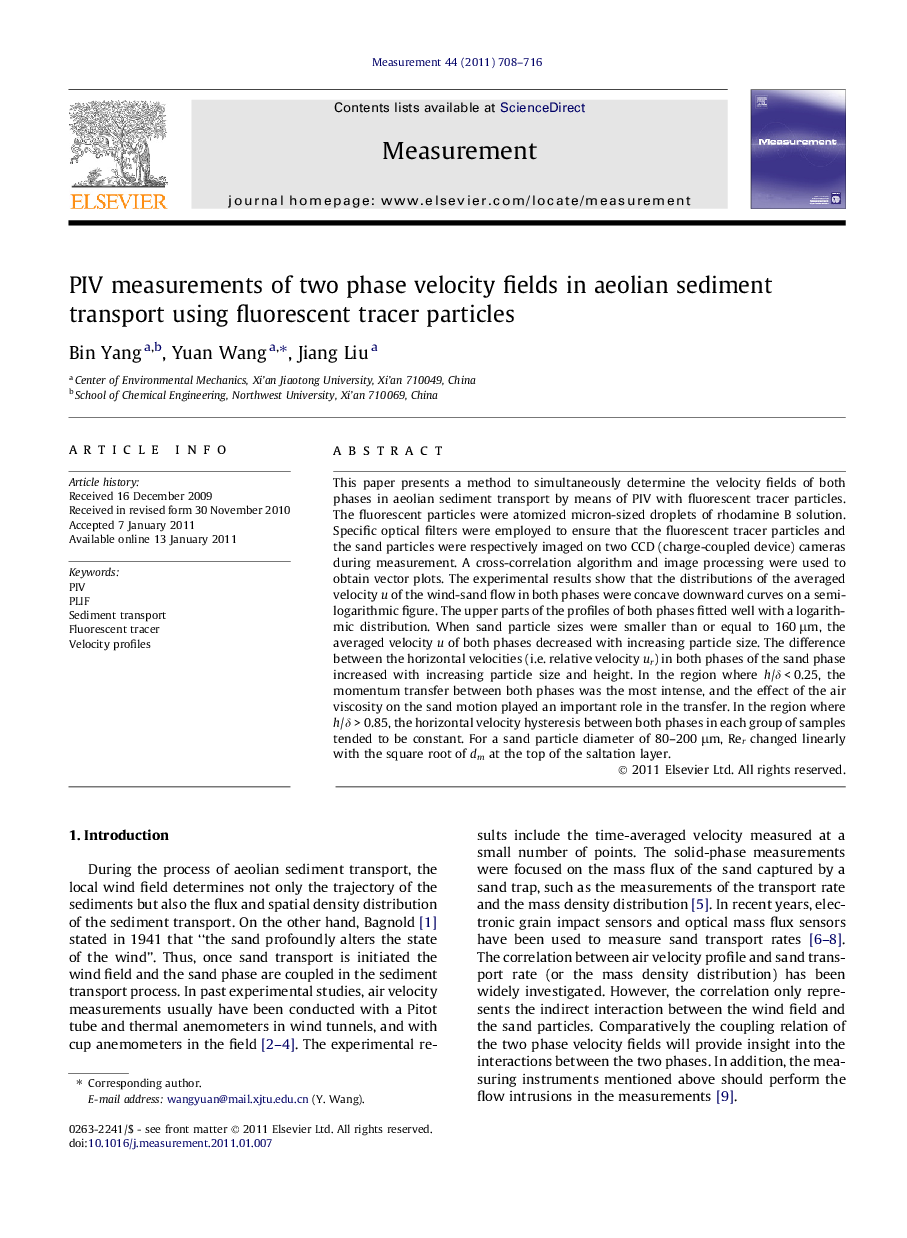| Article ID | Journal | Published Year | Pages | File Type |
|---|---|---|---|---|
| 727685 | Measurement | 2011 | 9 Pages |
This paper presents a method to simultaneously determine the velocity fields of both phases in aeolian sediment transport by means of PIV with fluorescent tracer particles. The fluorescent particles were atomized micron-sized droplets of rhodamine B solution. Specific optical filters were employed to ensure that the fluorescent tracer particles and the sand particles were respectively imaged on two CCD (charge-coupled device) cameras during measurement. A cross-correlation algorithm and image processing were used to obtain vector plots. The experimental results show that the distributions of the averaged velocity u of the wind-sand flow in both phases were concave downward curves on a semilogarithmic figure. The upper parts of the profiles of both phases fitted well with a logarithmic distribution. When sand particle sizes were smaller than or equal to 160 μm, the averaged velocity u of both phases decreased with increasing particle size. The difference between the horizontal velocities (i.e. relative velocity ur) in both phases of the sand phase increased with increasing particle size and height. In the region where h/δ < 0.25, the momentum transfer between both phases was the most intense, and the effect of the air viscosity on the sand motion played an important role in the transfer. In the region where h/δ > 0.85, the horizontal velocity hysteresis between both phases in each group of samples tended to be constant. For a sand particle diameter of 80–200 μm, Rer changed linearly with the square root of dm at the top of the saltation layer.
